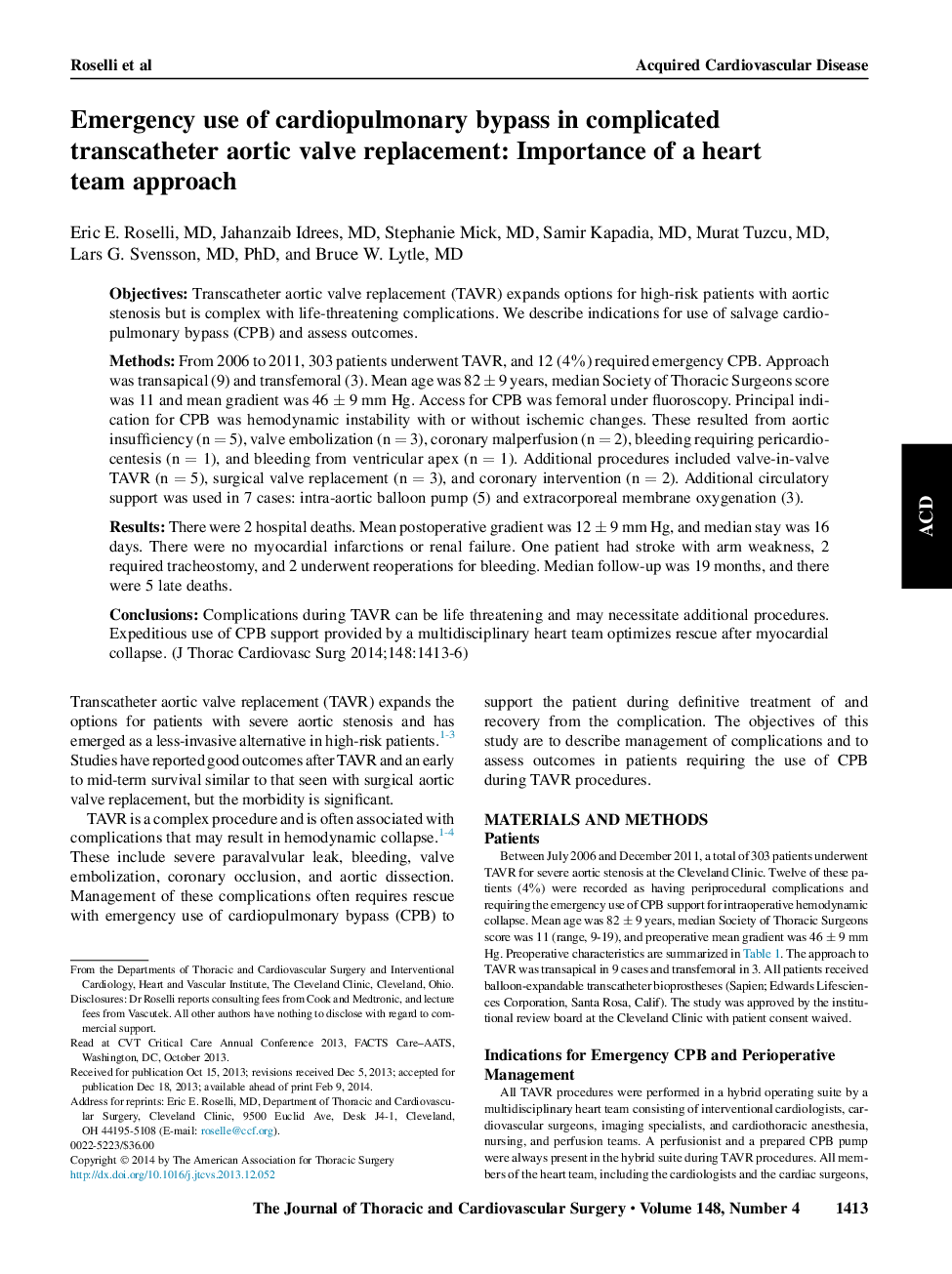| Article ID | Journal | Published Year | Pages | File Type |
|---|---|---|---|---|
| 2980398 | The Journal of Thoracic and Cardiovascular Surgery | 2014 | 4 Pages |
ObjectivesTranscatheter aortic valve replacement (TAVR) expands options for high-risk patients with aortic stenosis but is complex with life-threatening complications. We describe indications for use of salvage cardiopulmonary bypass (CPB) and assess outcomes.MethodsFrom 2006 to 2011, 303 patients underwent TAVR, and 12 (4%) required emergency CPB. Approach was transapical (9) and transfemoral (3). Mean age was 82 ± 9 years, median Society of Thoracic Surgeons score was 11 and mean gradient was 46 ± 9 mm Hg. Access for CPB was femoral under fluoroscopy. Principal indication for CPB was hemodynamic instability with or without ischemic changes. These resulted from aortic insufficiency (n = 5), valve embolization (n = 3), coronary malperfusion (n = 2), bleeding requiring pericardiocentesis (n = 1), and bleeding from ventricular apex (n = 1). Additional procedures included valve-in-valve TAVR (n = 5), surgical valve replacement (n = 3), and coronary intervention (n = 2). Additional circulatory support was used in 7 cases: intra-aortic balloon pump (5) and extracorporeal membrane oxygenation (3).ResultsThere were 2 hospital deaths. Mean postoperative gradient was 12 ± 9 mm Hg, and median stay was 16 days. There were no myocardial infarctions or renal failure. One patient had stroke with arm weakness, 2 required tracheostomy, and 2 underwent reoperations for bleeding. Median follow-up was 19 months, and there were 5 late deaths.ConclusionsComplications during TAVR can be life threatening and may necessitate additional procedures. Expeditious use of CPB support provided by a multidisciplinary heart team optimizes rescue after myocardial collapse.
